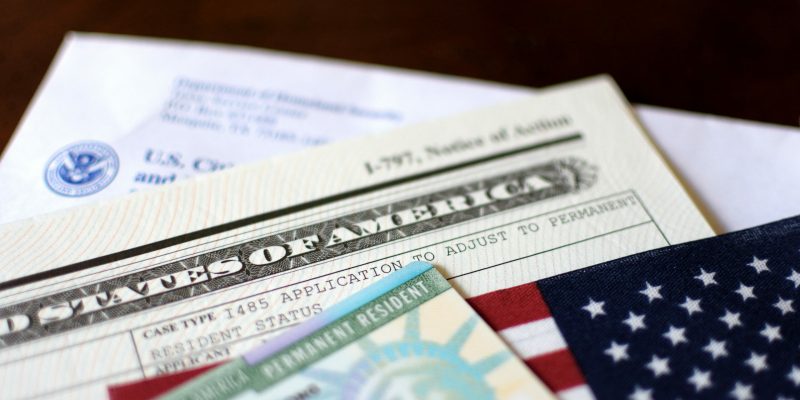Applying for a visa to immigrate to the United States involves navigating a complex system. A critical part of the process is understanding the time it takes for visa applications to be processed.
Whether you’re applying for a family-based green card, employment-based visa, or another visa category, it’s important to have accurate expectations about processing times.
In this blog post, we’ll provide an in-depth look at U.S. visa processing times. We’ll explain the factors that affect how long visa applications take to process, provide current processing time estimates, and offer tips for checking your case status.
With the right information, you can embark on your visa voyage with greater clarity and confidence.
What Exactly Are Visa Processing Times?
Visa processing times refer to the time it takes U.S. Citizenship and Immigration Services (USCIS) and the U.S. Department of State to complete all steps required to approve a visa application.
For family-based and employment-based green card applications, USCIS must approve an I-130 petition and I-485 adjustment of status application. The National Visa Center (NVC) and U.S. consulates then complete additional processing steps for immigrant visa applicants abroad.
For nonimmigrant visas, the embassy or consulate must process the DS-160 application, conduct any necessary administrative processing, and complete a visa interview.
Processing times measure how long it takes on average to complete these steps based on recent data. It’s important to note, however, that individual cases may be faster or slower.
Key Factors That Affect Visa Processing Times
Many different factors impact how quickly a visa application gets processed, including:
- Type of visa – Some visa categories inherently take longer than others based on processing requirements. For example, family-based visa applications must go through more steps than H-1B employment visas.
- Application errors – Incorrect or incomplete information can cause delays and lead to Requests for Evidence (RFEs) that prolong processing.
- Background checks – Lengthy background checks performed by multiple agencies add time to case completion.
- Country conditions – Applicants from countries with heightened security concerns often face longer administrative processing.
- USCIS and consulate workload – Staffing levels and application volumes at USCIS and U.S. consulates impact processing speeds.
- Medical exam expiration – Expired medical exams can pause cases until a new exam is completed.
- Document availability – Lost or unavailable documents to establish eligibility create delays.
- Seasonal variances – Application volumes fluctuate throughout the year, affecting timelines.
While individual timelines are unpredictable, understanding the key drivers provides helpful context on standard processing times.
How Long Does It Take to Get Specific Visa Types?
Now that you know how to check, here are the current processing timelines for some of the most common visa categories:
- Family-based green cards – Generally, it is 12-36 months from filing to approval, depending on the relationship and consular location. Spouses tend to be faster.
- Employment-based green cards – PERM labor certification takes 6-12 months. I-140 petition takes 6-12 months. The I-485 green card application takes 12- 36+ months, depending on the category and backlog.
- Fiancé K-1 visa – Currently, it takes 5-11 months for the I-129F petition to be processed by USCIS, then 3-6 months for consular processing.
- H-1B work visa – 6-8 months regular processing, 1-2 months premium processing.
- L-1 visa – 2-4 months regular processing, 15 days premium processing.
- B-1/B-2 visitor visa – A few days to 2 months for an interview, depending on the consulate location and season.
- F-1 student visa – 2-4 weeks in most locations if you have confirmation of university acceptance.
- J-1 exchange visitor visa – 2-4 weeks with sponsor approval documentation.
These time ranges are based on current USCIS and State Department data as of February 2023. Processing times fluctuate frequently, so re-check for your specific case.
How to Check Visa Processing Times
To get the most accurate sense of timelines, you need to check the current processing times data from USCIS and the State Department. Here’s how:
USCIS Processing Times
For green cards and most other USCIS-managed applications, check the USCIS Processing Times page. Enter your specific form type and field office location to see the current time range.
For example, as of February 2023, marriage-based green cards are taking 14.5 to 29 months at the San Francisco field office.
USCIS refreshes this processing time data every month based on the prior month’s filings. There are separate tables for field offices (which handle interviews) and service centers (which process filed applications).
NVC Immigrant Visa Processing
For family-based visa applications that go through consular processing abroad, you’ll need to check the National Visa Center (NVC) timeline.
Follow the steps below:
- Go to the NVC website.
- Select your specific visa category from the drop-down menu.
- Choose your consular post to see the time range.
Keep in mind that NVC timelines only cover pre-consular administrative processing. You’ll need to add the embassy interview timeline as well.
Nonimmigrant Visa Wait Times
For temporary, nonimmigrant visas, check the wait time tool on the State Department’s website:
- Go to the Check Visa Wait Times page
- Enter your visa class and location to see the estimated wait time for an interview appointment.
Wait times vary significantly by visa type, season, and consulate location.
Expediting Your Visa Application
While most visa types do not allow expedited processing, there are some options in limited circumstances:
- Premium Processing – Available for certain H-1B, L-1, and O-1 work visas for an extra fee of $2,500. Guarantees 15-day processing.
- Emergency Appointment – Nonimmigrant visa applicants can request an emergency appointment for urgent travel needs. Not always granted.
- USCIS Expedite Request – For exceptional circumstances only, such as severe financial loss or humanitarian reasons. Difficult to obtain.
- Congressional Help – U.S. Senators and Representatives can inquire about pending cases via a congressional liaison.
- Ombudsman – The USCIS Ombudsman may be able to assist if a case has been pending beyond normal times.
- Mandamus Lawsuit – Seeking a writ of mandamus is a legal option if USCIS has unreasonably delayed a case.
Unless you qualify for premium processing, expedited options are very limited. Trying to speed up the process is challenging.
What to Do If Your Case Is Delayed
With USCIS backlogs at crisis levels, it’s common for visas to exceed normal processing times. If your case is stuck longer than expected, here are some steps to take:
- Check your status online – Create an account on USCIS’s website to see if any requests for evidence need to be addressed.
- Call USCIS Contact Center – After crossing the normal boundary, call USCIS to inquire about a delay.
- Submit e-Request – File an electronic inquiry requesting an update on your pending case.
- Contact Congress – Reach out to your Senator or U.S. Representative for assistance contacting USCIS.
- Consult an Immigration Lawyer – Experienced attorneys can guide you through delays and find optimal solutions.
While frustrating, try to be patient within reason. USCIS faces huge backlogs and staff shortages. Unless there are special circumstances, avoid bombarding the agency with constant inquiries.
Partnering With a Visa Attorney
As this guide illustrates, navigating U.S. visa processing times is challenging. But you don’t have to go it alone.
Partnering with a skilled immigration attorney provides valuable guidance through every phase of the process. The attorneys at The Law Office of Lina Baroudi have years of experience helping clients apply for visas and green cards.
Based in San Jose, CA, they handle the entire application process on your behalf and ensure forms are error-free. Their team closely tracks processing times and gives you realistic case expectations based on current trends.
Contact their team today to schedule your initial consultation and start your visa voyage off right.











Comments